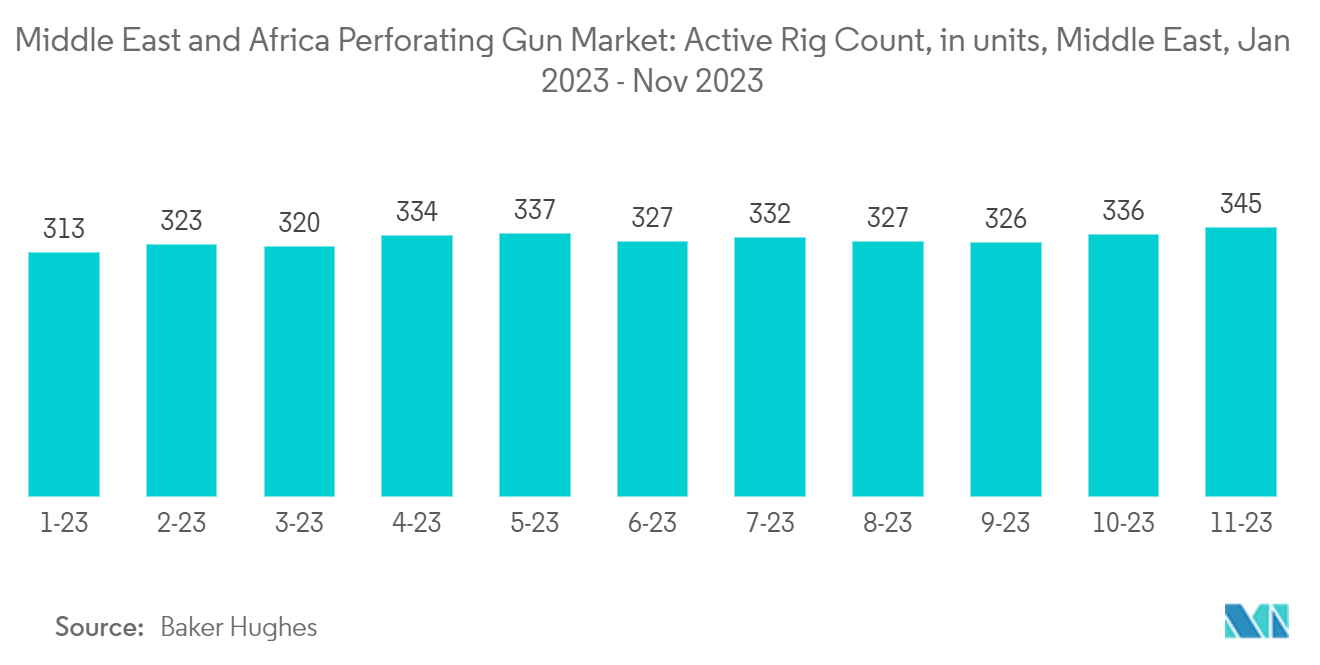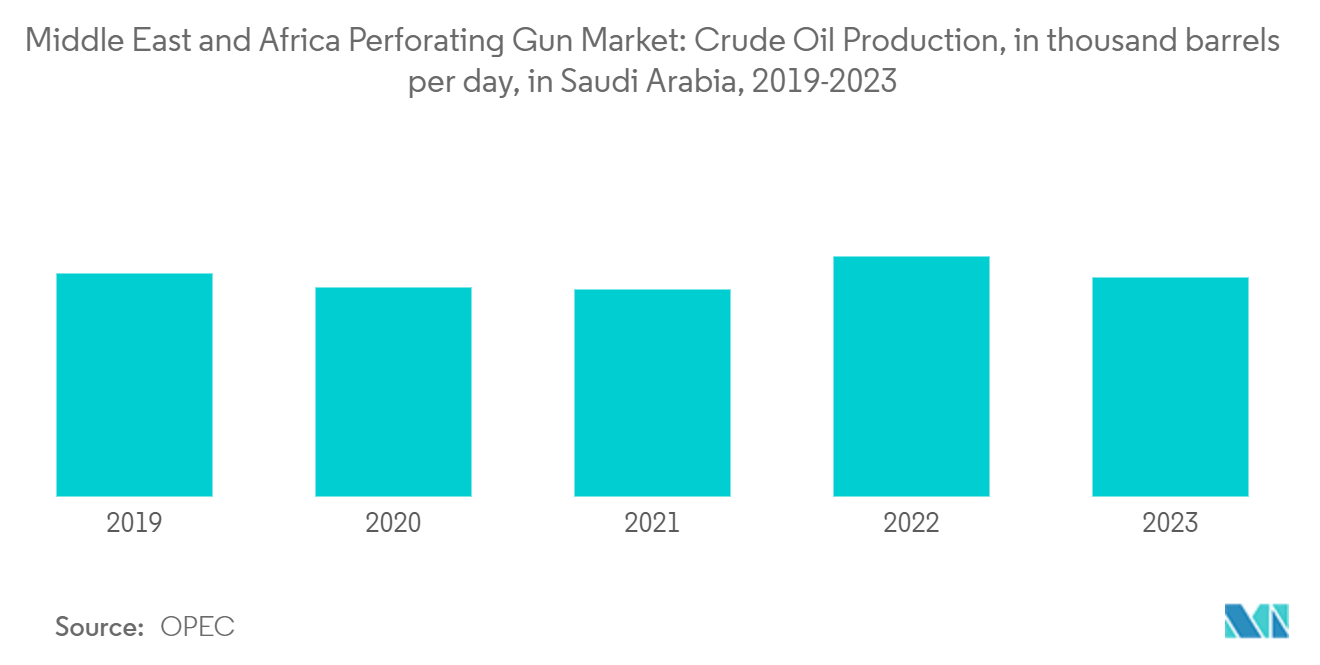Market Trends of Middle East And North Africa Perforating Gun Industry
Horizontal and Deviated Well Segment is Expected to Witness Significant Growth
- Horizontal well development is gaining popularity, owing to the benefits associated with the same technological advancements that have led to increased economic viability.
- Drilling in shale reserves involves directional or horizontal drilling, leading to increased contact with the pay zone and advanced production. Hence, a growing focus on unconventional reserves is expected to be a significant driver for the perforating gun market during the forecast period.
- With a growing trend of multilateral wells, the demand for horizontal drilling activity is increasing in offshore regions, which, in turn, is driving the market. Technological innovations and the increasing efficiency of horizontal drilling and multi-stage hydraulic fracturing technologies are unlocking vast unconventional shale and tight hydrocarbon resources in Saudi Arabia.
- According to Baker Hughes, as of November 2023, the total number of active rig counts in the Middle East accounted for 345 units, high from the 313 rig counts in January 2023. The increase in rig count is due to the increase in exploration and drilling activities to achieve more oil production in the region. Thus, to accomplish better production efficiency, the use of perforating guns is required for well activation and well completion.
- Further, upcoming drilling and production projects will demand the use of perforating guns in their operations. In August 2023, Arabian Drilling Company made a contract with Saudi Aramco for ten additional land rigs. The five-year contract, worth USD 810 million, is for Aramco’s unconventional gas program in the Kingdom. This, in turn, culminates in the growth in the usage of perforating guns across the region.
- Countries such as the United Arab Emirates, Qatar, Algeria, Libya, and Saudi Arabia have also started exploring the commercial viability of their shale reserves. Hence, with the rising exploration and production of shale oil and gas through horizontal drilling, the perforating gun market is also expected to witness a significant demand.
- In the future, with technological advancements in manufacturing better perforating guns with improved efficiency, its use in horizontal and deviated wells is expected to increase.
- Therefore, owing to the above points, the horizontal and deviated well segment is expected to witness dominant growth during the forecast period.

Saudi Arabia to Dominate the Market
- Saudi Arabia is one of the major global oil producers. According to the Organization of Petroleum Exporting Countries, in 2023, the country's total crude oil production accounted for 9,609 thousand barrels per day. Production decreased compared to last year, but as the petroleum sector is trending to focus on unconventional reserves, the use of perforating guns is expected to be in demand to increase production from these reserves.
- As a significant crude oil exporter, the country has great control over the international upstream market. Due to its high surge capacity, the country plays a crucial role in controlling crude oil prices. This can be considered a good sign for perforating gun markets.
- Also, the country has the world's fifth-largest estimated shale gas reserve, and thus, it has great potential for the country to replicate North America's unconventional reserves development growth. This culminates in the growth in the use of perforated guns in the region.
- Moreover, in March 2024, the state oil company Saudi Aramco's Saudi Arabian Oil Company (Aramco) announced it would boost its capital expenditure to USD 49.7 billion for FY 2023, which further bolstered the country's exploration and production activities. An increase in these activities is expected to eventually increase the demand for perforating guns due to their better and easier production.
- Therefore, owing to the above points, Saudi Arabia is expected to dominate the Middle East and North Africa perforating gun market during the forecast period.


